| You are not logged in. | login to customize your own personal play list |
“Creep” by Radiohead |
| United States Federal Trade Commission forbids anyone under 13 from viewing these music videos! |
| You are not logged in. | login to customize your own personal play list |
“Creep” by Radiohead |
| United States Federal Trade Commission forbids anyone under 13 from viewing these music videos! |
 |
 |
 |
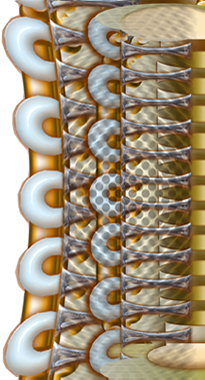 |
You need Flash player 8+ and JavaScript enabled to view this video.
|
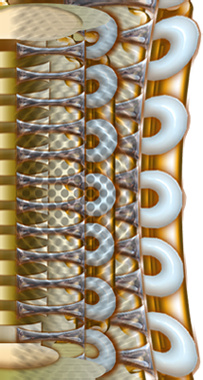 |
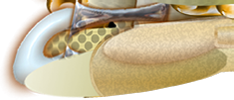 |
   |
 |
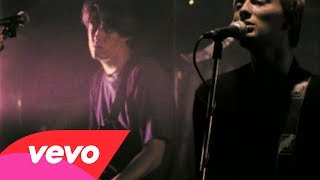
song info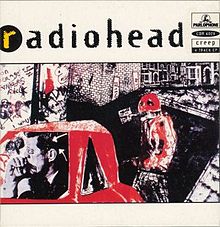
 “Creep” by Radiohead (official video) is an alternative rock song. Song Title: Creep (official video)Artist: Radiohead Album: Pablo Honey Genre: alternative rock, grunge Composer: Copyright © 1992 Radiohead, Albert Hammond, Mike Hazlewood Musical key: G Major Lead Vocals: Thom Yorke Guitar: Jonny Greenwood, Thom Yorke, Ed O’Brien Piano: Jonny Greenwood Bass Guitar: Colin Greenwood Drums: Phil Selway Producer: Sean Slade, Paul Q. Kolderie Recorded: 1992 Chipping Norton Recording Studios Oxfordshire UK Released: 21 September 1992 Format: 7" 45-rpm vinyl single, 12" vinyl, CD, cassette Label: Parlophone, EMI Number of listens: 42315 Current rank: 136 (updated weekly) Highest rank: 92 (play the video all the way through to register a vote for this song) Translations courtesy of Apple and Google. |
||

Summary quotation from Wikipedia:
“Creep” is a song by the English alternative rock band Radiohead. Radiohead released “Creep” as their debut single in 1992, and it later appeared on their first album, Pablo Honey (1993). During its initial release, “Creep” was not a chart success. However, upon re-release in 1993, it became a worldwide hit. Attendees of Radiohead’s early gigs often exhibited little interest in the band’s other songs, causing the band to react against “Creep” and play it less often during the mid-to-late 1990s. In 1998, halfway through their OK Computer tour, the band dropped the song from set lists altogether. “Creep” was not played live again until 2001, but it has since reappeared several times on the band’s live sets.
In 2008, the song was included in the Radiohead: The Best Of compilation album.
Background and recording
According to Radiohead bassist Colin Greenwood, Thom Yorke wrote “Creep” while studying at Exeter University in the late 1980s. Guitarist Jonny Greenwood said the song was inspired by a girl that Yorke had followed around who showed up unexpectedly during a show by the band.
In 1992 during rehearsal sessions with producers Sean Slade and Paul Q. Kolderie, Radiohead spontaneously performed “Creep”. Yorke described “Creep” to the producers as “our Scott Walker song”; Slade and Kolderie mistook the singer’s remark and believed the song was a cover. After tension arose due to unsatisfactory attempts at recording other songs, Slade and Kolderie tried to improve morale by requesting Radiohead to play “Creep” again. The band recorded the song in a single take; after the performance everyone in the room burst into applause. Once the band assured Kolderie that “Creep” was an original song, he called EMI to tell them to consider the song as Radiohead’s next single. While the recording had minimal overdubs and the band did not intend to release it, the producers were impressed with the song.
Due to similarities to “The Air That I Breathe”, a song recorded by The Hollies in 1973, Radiohead was successfully sued for plagiarism. Consequently, Albert Hammond and Mike Hazlewood are credited as co-writers of “Creep”. “Creep” uses a chord progression used in “The Air That I Breathe” in its verse and a melody from “The Air That I Breathe” in the bridge following the second chorus.
Composition and lyrics
The G–B–C–Cm chord progression is repeated throughout the whole song, just alternating between arpeggiated chords in the verses and last chorus and loud power chords during the first two choruses. In G major, these may be interpreted as “I–III–IV–iv”. According to Guy Capuzzo, the ostinato musically portrays “the song’s obsessive lyrics, which depict the ‘self-lacerating rage of an unsuccessful crush’.” For example, the “highest pitches of the ostinato form a prominent chromatic line that ‘creeps’ up, then down, involving scale degrees-#
-
-♭
…[while] ascend[ing], the lyrics strain towards optimism…descend[ing], the subject sinks back into the throes of self-pity…The guitarist’s fretting hand mirrors this contour”.
When the song shifts from the verse to the chorus, Jonny Greenwood plays three blasts of guitar noise (“dead notes” played by releasing fret-hand pressure and picking the strings). Greenwood said he did this because he did not like how quiet the song was; he explained, “So I hit the guitar hard—really hard”. Ed O’Brien said, “That’s the sound of Jonny trying to fuck the song up. He really didn’t like it the first time we played it, so he tried spoiling it. And it made the song.” During the song’s outro, Jonny Greenwood plays a piano figure. Kolderie forgot to add the piano part during the final mix until the end of the song, but the band approved of the final result.
According to Yorke, “Creep” tells the tale of an inebriated man who tries to get the attention of a woman to whom he is attracted by following her around. In the end, he lacks the self-confidence to face her and feels he subconsciously is her. When asked about “Creep” in 1993, Yorke said, “I have a real problem being a man in the ’90s… Any man with any sensitivity or conscience toward the opposite sex would have a problem. To actually assert yourself in a masculine way without looking like you’re in a hard-rock band is a very difficult thing to do… It comes back to the music we write, which is not effeminate, but it’s not brutal in its arrogance. It is one of the things I’m always trying: To assert a sexual persona and on the other hand trying desperately to negate it.” Jonny Greenwood said the song was in fact a happy song about “recognizing what you are.”
The version issued for US radio play replaced the line “So fucking special” with “So very special”. The group was worried that issuing a censored version would be a “bit of a sellout” according to Jonny Greenwood, but they decided it was acceptable since their idols Sonic Youth had done the same thing. Nonetheless, Greenwood noted the British press “weren’t impressed” by the action. During the recording session for the censored lyrics, Kolderie convinced Yorke to rewrite the first verse, telling him he thought the singer could do better.
Release and reception
Despite initial reluctance, staff at EMI ultimately grew enthusiastic about “Creep”, and the label decided to issue it as a single. “Creep” met with little success in the UK when it was first released in September 1992. Radio 1 found the song “too depressing” and refrained from playing the song. “Creep” reached number 78 on the UK Singles Chart, selling only 6,000 copies. The band soon moved onto a second single, “Anyone Can Play Guitar”, to promote the album Pablo Honey, and released a non-album single, “Pop Is Dead”.
Towards the end of 1992, DJ Yoav Kutner played “Creep” incessantly on the Israeli radio. He had been introduced to the song by a local representative of EMI. The song soon became a national hit. Radiohead quickly set up tour dates in the country to capitalise on the success. “Creep” had similar success in New Zealand, Spain, and Scandinavian countries. Around the same time, the San Francisco, California radio station KITS added the song to its playlist; and soon other radio stations along the American west coast followed suit. A censored version of the song was made available to radio stations, and by the second half of 1993, the song had become a hit nationwide. By the time Radiohead went to the United States, they were surprised by the success of the song. Yorke told Melody Maker in 1993 that many journalists misunderstood the song, asking him if it was a “joke”.
Radiohead initially did not want to reissue “Creep” in the United Kingdom, but eventually relented. Bassist Colin Greenwood said that “after doing so well in America, there was this tremendous pressure from radio people, the press, the record company, even our fans, to put it out”. The 1993 reissue reached number seven on the UK Singles Chart. The release was bolstered by a September 1993 Top of the Pops performance, which drew criticism from the music press and fellow artists: Oasis guitarist Noel Gallagher opined that Radiohead were willing to appear on the show and alter the lyrics to reflect the clean edit of the song “because it made them more money”. In December 2007, the song was ranked at #31 on “VH1’s 100 Greatest Songs of the 90’s”. In June 2008, “Creep” reentered the UK Singles Chart at number 37 after its inclusion on the compilation album Radiohead: The Best Of.
Performances
After mid-1998, Radiohead did not play the song live at all until the final encore of a 2001 hometown concert at South Park, Oxford, when they played it in a seemingly impromptu decision after an equipment failure on the organ just after the start of “Motion Picture Soundtrack”. Thom Yorke commented that they would be playing a “slightly older song… I think.” To date, the last major performance of the song was at Reading Festival 2009, where it opened their set.
In April 2008, Prince covered “Creep” at Coachella. This version was captured on a video from a concert-goer’s mobile phone, and uploaded to YouTube. However, it was quickly taken down at Prince’s request. After finding out about the blocking, Thom Yorke was quoted as saying, “Well, tell him to unblock it. It’s our song.”
—from Wikipedia (the Wikipedia:Text of Creative Commons Attribution-ShareAlike 3.0 Unported License applies to Wikipedia’s block of text and possible accompanying picture, along with any alterations, transformations, and/or building upon Wikipedia’s original text that ThisSideofSanity.com applied to this block of text)
The Americans with Disabilities Act (ADA) and U.S. Government Section 508 of the Rehabilitation Act of 1973 require that web sites provide transcripts of audio for the deaf.
We will be adding lyrics to all songs as fast as we can. Please be patient.
Isla: Creep is Hui’s favorite song.
To submit a comment, use the form below:
Please use the form (with the delay for a human to inspect it) because this website is attacked by more than 20 spam attempts per minute. The only way to keep you safe from the spam is by having human review.
 |
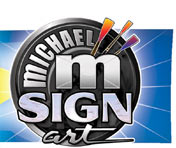  |
|
If you spot an error in fact, grammar, syntax, or spelling, or a broken link, or have additional information, commentary, or constructive criticism, please contact us.
Copyright © 2014 Milo. All rights reserved. Todos Derechos Reservados. The copyrights on all source code and the data base belong to Milo and are used on this web site by permission.
The source code is at OSdata.com, released under Apache License 2.0.
Copyright 2012, 2013, 2014 Milo
Licensed under the Apache License, Version 2.0 (the “License”); you may not use this file except in compliance with the License. You may obtain a copy of the License at:
http://www.apache.org/licenses/LICENSE-2.0
Unless required by applicable law or agreed to in writing, software distributed under the License is distributed on an “AS IS” BASIS, WITHOUT WARRANTIES OR CONDITIONS OF ANY KIND, either express or implied. See the License for the specific language governing permissions and limitations under the License.
Enjoy the This Side of Sanity website Twitter feed.
Enjoy the This Side of Sanity Twitter feed.

|
player artwork by michaelm